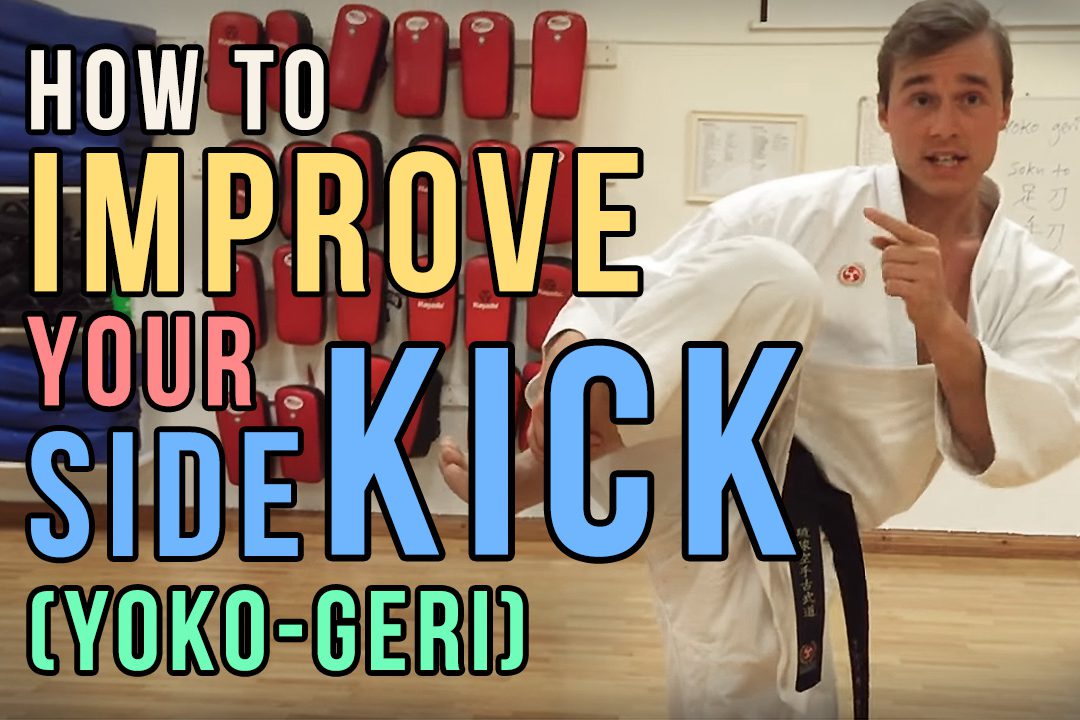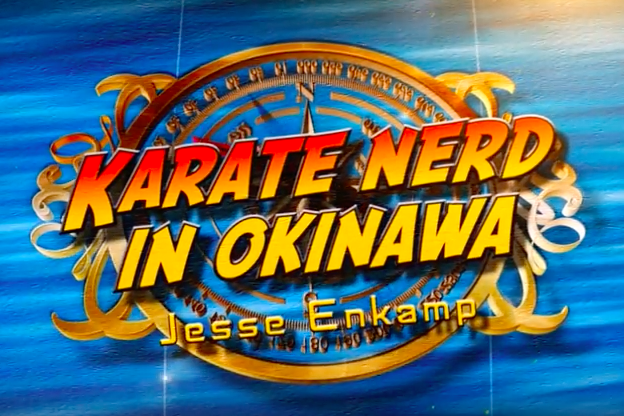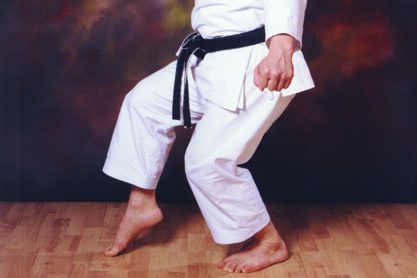Remember that article a couple of months back, where I basically outlined why most bunkai (practical applications to kata) on the market sucks?
(Yeah, that one.)
Well, it’s time for part two.
For all you enthusiasts who have stood there completely clueless when your sensei went “Umm… I’m not sure about that one…” after you showed off your 720 Dragon Kick of Awesomeness bunkai, this one is for you.
Here we go:
#1: You presume your opponent does a combo.

“Quick, punch me. Hah, I blocked! Now punch me again here. Haha, I blocked again. Now kick me here, punch me there, and then grab me here. I block everything, add a counter punch to your abs and throw you down, finishing with a stomp on your head. Success! End of bunkai.”
Ninja, please.
This is perhaps one of the biggest mistakes people do when figuring out bunkai. They are so obsessed with a fixed series of techniques in a kata (a so-called pre-determined combo), that they simply have to be attacked by a multitude of clearly defined blows before they can *finally* end the bunkai by shifting from defensive mode to counter mode with the last technique in the series.
Okay, let’s do a quick probability analysis, for a bunkai that has you defending against a low straight punch, high straight punch, straight kick and wrist grab:
- The probability that you will be attacked by a low, straight punch: 1 in 100.
- The probability that the preceeding low punch will be followed up by a high, straight punch: 1 in 10’000.
- The probability that the low punch, followed by the high punch, will be followed up by a straight kick: 1 in 100’000
- The probability that the low punch, followed by a high punch, followed by a kick, will be followed up by a wrist grab: 1 in 100’000’000
And then you magically defend yourself against this fairytale attack scenario and win.
(By now you probably realize that I’m no mathematician. But you get the point)
The mere notion that you can actually anticipate *exactly* what follow-up attacks your opponent is going to do – in every possible scenario on earth – and then easily defend yourself against those anticipated attacks, is so unlikely that I find it simply mind-blowing how people can keep defending against thirteen techniques in a row and finish up with a gyaku-zuki/foot sweep combo in e-v-e-r-y friggin’ demonstration out there.
You should be lucky if you even manage to defend against the first attack.
Most brawlers on the legendary “street” don’t expect you to still be standing after that one anyway.
The rest is just a black hole.
So my suggestion is, you’d better prepare for that black hole instead of making up fairytale scenarios (which decrease in probability for every extra attack you add).
Stop presuming that your opponent will do a series of techniques that magically fits into your kata.
Because it ain’t gonna happen.
Think outside of the xob.
#2: You presume the attacker is a martial artist.

Continuing on the theme from the previous point:
I mean, come on; who is going to attack you with either a straight punch to the sternum, straight kick to the belly or even a simple wrist grab?
I’ll tell you who:
A martial artist.
Hey, Einstein – newsflash: kata and its bunkai were never meant to be used against trained attackers. It was meant to be used against a 400 pound testosterone monster nicknamed Gargatua with only one goal in mind – ripping your face off. Which means that 90% of your dojo techniques will fly out of the window from the pure fear and paralyzation you’ll most likely experience as he it rushes against you in a dark alley.
You have one shot.
Don’t screw it up.
And the likelyhood that Gargantua will give you a clean straight punch, and then stand still with his arm stretched out in in front of you while you proceed to blast him it with a 10-hit combo finishing off with a perfect hip throw is not really on the map, is it?
Unless he is a Shotokan grandmaster, that is.
So let’s cut the crap and simply realize that you cannot expect to be attacked by Karate techniques when performing a bunkai, because we Karate people have better stuff to do than attacking each other.
[Fun sidenote: My friend asked ten buddies (including his girlfriend) to hit him with a straight punch to the face the other day. Not a single one of them could do a straight punch, unless he showed them how.]
And wrist grabs? Come on. In 9 times out of 10 a wrist grab is simply the result of your opponents natural reactions against your first line of defense.
Which brings me to the third point:
#3: You forgot your opponents reaction.

Question: What happens when you flick sand into someone’s eyes?
Answer: They flinch. Throw their head back, and then to the side. Maybe turn around. Hands go up to their face.
Easy enough. A natural reflex that we all have since birth. Next one:
Question #2: What happens when you punch somebody in the face?
Answer #2: They flinch. Throw their head back, and then to the side. Maybe turn around. Hands go up to their face.
Oh… my… GOD!
It’s the EXACT same response!
How come? Are we all trained to react this way? No, we’re not. But, just like we react when dirt, sand or gravel is thrown into our eyes, we have a natural pre-determined response to being punced in the face, that might change a whole self-defense scenario if you didn’t count it in.
Quick! What happens when you get a kick in the groin?
You bend forward.
What happens when somebody bends your fingers violently down?
You stand on your toes.
These are natural physical reactions that we must always take into consideration when we figure out bunkai, because in my opinion these natural pre-determined responses are the single most important reason to we even have such things as “combinations” to begin with! The old masters knew this.
A foot sweep can easily succeed a joint lock that get’s your opponent to his tippie toes. Even a little girl can sweep somebody who is in that position! Just as a downward elbow strike to the neck can easily succeed a kick to the groin. Even a baby can elbow somebody in the neck when slumped over in that position.
Kata, and its bunkai, is built upon these universal physical responses.
Remember how I said in point #1 that you can’t possibly anticipate what the next attack would be in a series?
Well, you still can’t.
But you can – and should – anticipate the reaction to an attack.
Sure, it will look a bit theatralic when you practise (unless you actually want to pull out the hair of your friend, kick him in the groin, stomp him on the foot etc.) but that’s just because we need to practise that way in order to know what will happen in real life.
Quick! Run away from the computer and grab a guy’s groin violently.
His reaction?
There’s your wristgrab right there.
Easy.
Unless he just gives you his telephone number…
#4: You don’t think laterally.

Ever heard the term “lateral thinking”?
Lateral thinking is solving problems through an indirect and creative approach, using reasoning that is not immediately obvious to a beginner, and involving ideas that may not be obtainable by using only traditional step-by-step logic.
See that word up there, in the end?
“Traditional”
To truly figure out awesome bunkai, you need to look past the many obstacles hidden under cloaks of tradition. “In our style, we don’t do that” will not cut it anymore, as more and more modern martial arts people are laughing at us square Karate people.
Solution?
Think lateral.
When you step forward in a kata, are you moving towards something… or away from something? Is a punch actually a punch forward… or is it in fact an elbow strike back? Are you kneeing your opponent… or are you actually stomping down? When you drop down to the floor, are you avoiding something up there, or are you going to something down here? The list goes on.
Depending on where you lay the emphasis of a technique, it changes the whole meaning of the technique.
If I remember correctly, Albert Einstein advocated that there were in fact four basic dimensions (as opposed to 3-D), with the fourth being T (time). So why don’t you try to do a technique several times, each time changing the meaning of the technioque through gradually tweaking your perspective of time and its correlation to the impact?
Do it.
Once you really start going with the lateral thinking, you can’t imagine doing anything else!
Which brings me to the last point of today.
#5: You don’t care what others have done.

But you must.
Because other people might have awesome solutions to your bunkai problems, even though you don’t know it until you actually meet and exchange knowledge.
And hey, if they have no interest in exchanging – steal. Steal ideas ruthlessly. Nobody owns ideas, they are just floating around there. It’s how you use them that’s important.
- YouTube.
- Books.
- Seminars.
- Videos.
- DVD’s.
- Online Courses.
- Blogs.
- Magazines.
There are so many sources out there that you can’t ignore them!
But what you must ignore is the labels.
In fact, I encourage you to NOT look at stuff labeled Karate.
Which reminds me of a great story told by the king of Karate research, hanshi Patrick McCarthy, from one of this numerous visits to Fuzhou, Fujian Province, China in November 1990:
Amid the several foreign countries partaking in the martial arts festival was a Japanese delegation with members from various fighting arts. One evening in the banquet hall after dinner, several of the groups were enjoying, “a few drinks,” and exchanging stories. In a rather lively conversation, “alleging that the Japanese misunderstood the original fighting arts of Shaolin,” one of the Chinese delegates blurted out something like, “…for example, jujutsu is an application-based practice but without our old solo routines [kata], and yet karate has preserved our old routines but still don’t understand their application!” The comment was greeted with a roaring silence, until one gentleman from the Japanese delegation responded with, “are you suggesting that each of these arts is a smaller part of a larger whole, and incomplete in itself?” As the Chinese gentleman skulled the last of his beer, he proudly announced, “Karate and jujutsu both trace their roots back here to our Fujian- based Shaolin practice, therefore, wouldn’t you all just be better off studying our original art?”
Food for thought, for real.
And with that being said, this post is finished for now. But believe me, before you know it, I’ll be back with a couple of more reasons to why your bunkai (probably) might suck (again). Just in case.
Now go figure some moves out, aiight!



63 Comments